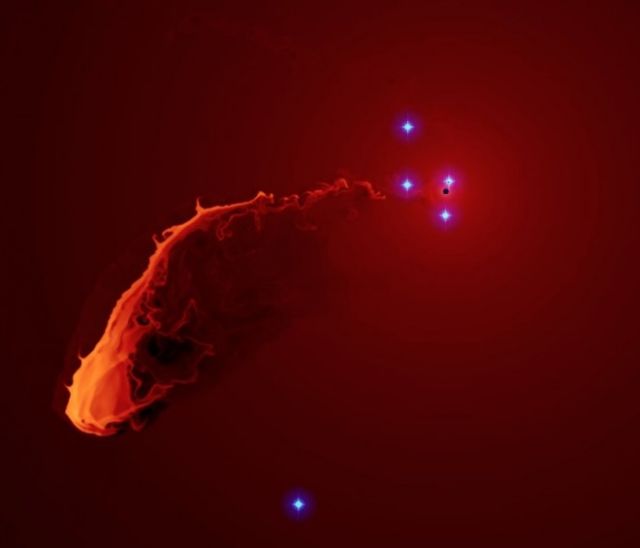| Online: | |
| Visits: | |
| Stories: |
Scientists May Get Best View Yet Of A Black Hole In Action (Video)
Sunday, March 16, 2014 5:50
% of readers think this story is Fact. Add your two cents.
(N.Morgan) The cosmic event of the year is here! Telescopes all over the world are focusing on the galaxy’s center, where, for the first time ever, they may have a front row seat to a supermassive black hole consuming a gas cloud. By observing this galactic snack fest, astronomers should be able to figure out what’s going on in the black hole’s immediate vicinity and potentially even witness some gas disappear into the massive object’s maw. What they see may help scientists solve a decades-old puzzle about why our galaxy’s central black hole is so quiet.
Though we think of them as cosmic vacuum cleaners, black holes are actually just like any other massive body, such as a star. This means other objects can safely orbit them, until they get within a particular distance and pass what’s known as the event horizon, after which there is no escaping being sucked in. The gas cloud currently headed for the central black hole could either continue on its current orbit and slingshot around the black hole or it could run into surrounding gas and dust, which will make it lose speed and start sliding down toward the black hole. The first scenario could give scientists insight into the evolution of galaxies and better understand the history of our Milky Way’s own black hole. In the second case, they might get to watch the black hole consume a sizable dinner.
No matter the outcome, “it will be absolutely stunning to see the physics at work,” said Gillessen.

Scene from the computer simulation above showing one possible trajectory for G2 as it passes around the central black hole. Image: ESO/MPE/M. Schartmann/L. Calçada
More Stories:
Rothschild Struck Again?? Patents To Blame For Missing Flight 370?? (Video)
Was Flight 370 A Decoy For Something Else?? (Video)
House Bill Urges President To Release Information On 9/11 (Stunning Video)
Woody Harrelson Is Anti-Illuminati And A 9/11 Truther (Video)
HAARP In Action.What Is That Coming Out Of The Sun?? (Video)
Could The Missing Plane Be Linked To Space Wars Between Russia Or China? Video
Get The War Gear – US Builds Up Military Forces, Threatens End To Diplomacy Over Ukraine (Stunning Video)
Busted! Flight Radar Caught Changing Flight Path Of Malaysia Flight 370! (Shocking Video)
It’s On! The HAARP War- California Rocked By 6.9 Earthquake!! (Video)
NATO Plans To Become Global NWO Police State- Americans Into FEMA Camps (Video)
More Stories Contributed By N. Morgan
Also featured at:
AlternativeNewsToMe1 – Blogspot
AlternativeNewsToMe1 – WordPress




